
|

|

|
Video: Last week Rick finished the excruciating repair to the curve under the mountain thus enabling SD70s to run the entire layout without derailing. So John thought if Rick could run 1 then he could run 2 linked together. After succeeding, he thought if I can run 2 then I can run 3 linked. After this victory, he thought if I can run 3 then I should be able to run all 4 tied together. Success! |
Video: Next, John ran 4 SD70s pulling 12 coal hoppers. So John thought if I can run 12 then I should be able to run 24. Success! So John thought if I can run 24 then I should be able to run 48. Victory! Heck, the 4 SD70s hardly broke a sweat. So John upped the ante and built a 74-car train which can be seen in this mesmerizing run at the double crossover. |
Video: While looping the layout, for some unknown reason, the 74-car train paused briefly which caused the consist to string-line (cars derailing along the curve). To alleviate this problem, John pulled off one of the SD70s and stuck it in the middle of the train. RailPro matched all locomotive's train speeds elegantly and the train continued without issue. Amazing! |

|

|

|
| Video: F7 numbers 1500 and 1517 were called into Maintenance of Way (MoW) duties running the track cleaning car. A total of 15 passes around the loop removed an incredible amount of dirt and grime. | Rick cut offset expansion joints on the curve under the mountain. He then added jumper wires between these rails. Each jumper wire had a pig tail loop to allow for its expansion and contraction. |
Rick wanted to add an outer curve tunnel lining so video would look more realistic. Unfortunately, the foam board came to close to the Ultradome cars. Therefore, some of the material would need to be removed. |

|

|
 |
Rick used the hot wire to remove a sliver of the foam board. The beauty of the hot wire is it leaves almost no mess to clean up. |
The final product looked great! Next week Rick will continue adding the black cardboard lining around the rest of the tunnel. |
Video: Rick ran his GoPro/MoW consist through the tunnel to grab some video. This unique train is shown here passing the Anchorage yard. |

|

|

|
Video: Rick ran his GoPro/MoW consist through the north end of the tunnel to grab some video. The cardboard tunnel wall (seen at left) is now 100% complete. |
Video: This time he ran his GoPro through the south tunnel entrance. The tunnel wall is on the right. Rick will eventually paint all the white and pink surfaces with black paint. |
Video: John needed to finish the Boy Scout camp stream by extending it to the fascia. Rick used a jigsaw to cut out the corresponding land form. |

|

|

|
| With the fascia removed, the crew can now remove the foam board and grass scenery.. | After removing some of the foam board, Rick used a scrap piece of wood to simulate the flow direction of the stream. |
Rick positioned the culvert in the desired location. A toilet paper tube was cut in half lengthwise and served as the culvert pipe. |

|

|
 |
The headwall is put in the proper location. The wing walls are not shown in their correct position and will be repositioned 45 degrees outward. |
With expert skill, Rick used the hot wire to cut foam board to create a support floor and sides for the scenery material. |
The foam board was added below and on the northern end and glued into place. Next week, the remaining foam board and culvert will be added. |
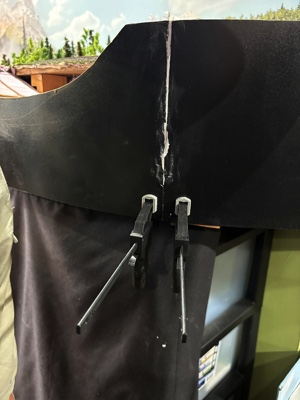
|
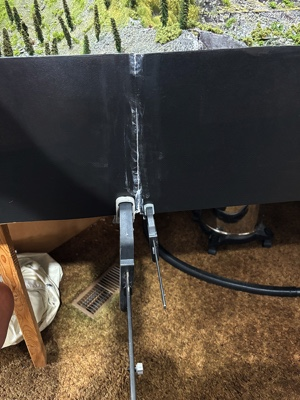
|
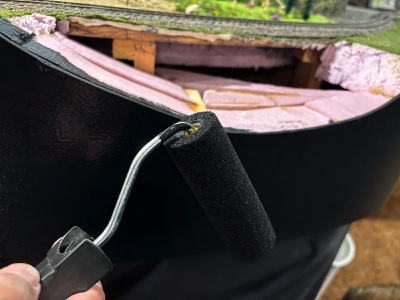
|
Over time crew members have bumped against fascia joints resulting in cracks and splits. John finally got around to fixing these areas. At Eppley's Curve, he reinforced the backside with a block of wood and used clamps to hold them in place while the glue set. He then filled the cracks with Spackle. |
This fascia joint is located near the tunnel. As before, the clamps hold the glued wood block and Spackle is applied. |
Once all joints have dried, the Spackle is sanded and the areas painted. John also checked all the fascia around the layout and repainted as necessary. |
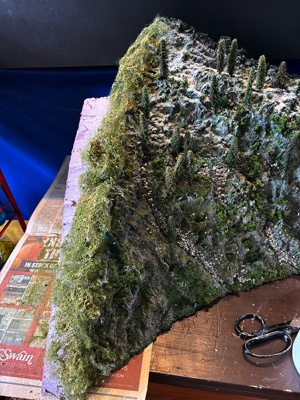
|
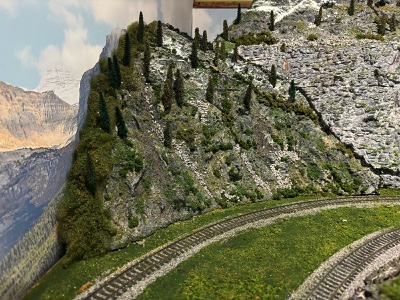
|
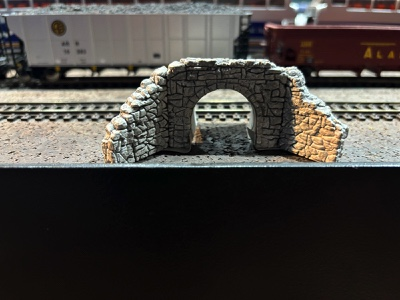
|
| There was an ugly gap between the east side of the mountain wing and the backdrop. John took the easy way out and used foam netting to fill the space. A pink piece of Styrofoam held the netting out while ground foam, rocks and glue were applied. | After everything dried the wing was put back into place. It was definitely a huge improvement. |
Rick did the finishing work on the culvert. The wall wings went backward, but Rick modified them so they slanted forward. He then glued the cardboard tube into place. |

|
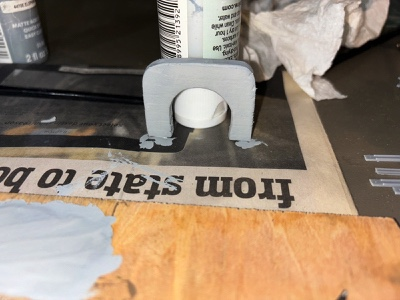
|
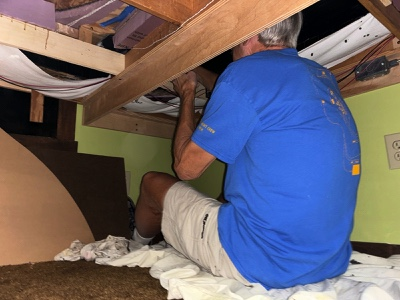 |
Rick used the hot wire to cut Styrofoam for the base of the culvert. He then glued everything into place. Now John can begin the scenery work. |
Rick also used the culvert as a pattern to create a wood culvert for the other side of the track. John painted it gray and put it aside to dry. |
Rick crawled under the mountain and painted all tunnel surfaces black. He then ran his video train through the tunnel. Stay tuned next week for the viewing results. |
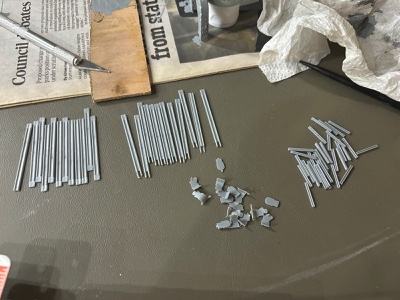 |
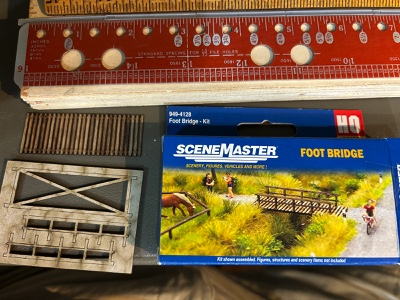 |
|
| John began work on a three foot long guardrail for the area adjacent the barge. We wouldn't want those truck drivers to steer their semi-trucks into the water! | The guardrail pieces are glued together and then kept straight between two rulers. This is shown at the top of the photo. The bottom of the photo shows a foot bridge which will replace the one in the Boy Scout camp. |









